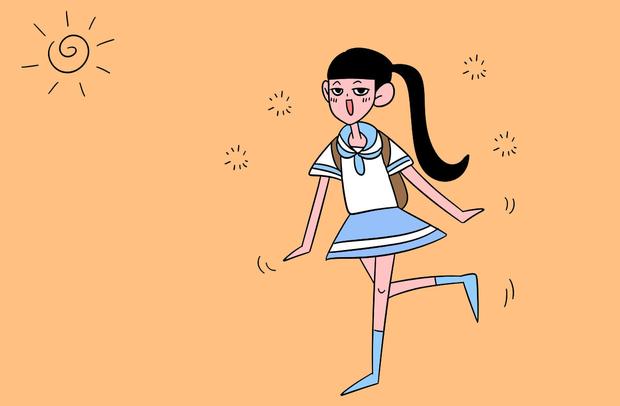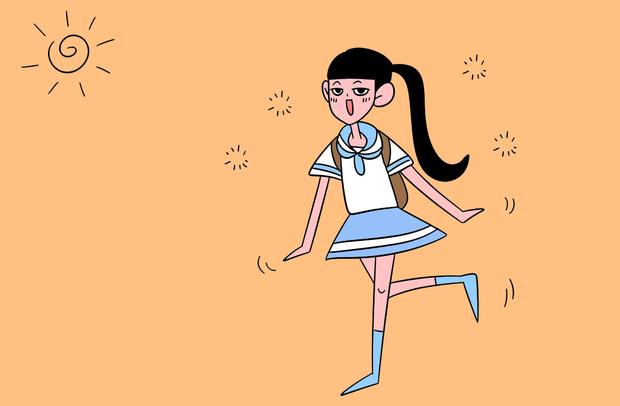高考英语阅读理解解题技巧及经典题型
2018-09-20 18:35:58文/叶丹高考英语阅读理解题型主要有主旨大意题,细节理解题,推理判断题,词义猜测题等,下面是英语阅读理解经典题型及解题技巧,希望能对大家有所帮助!

高考英语阅读常见题型
主旨大意题
这类题在设题时常会用到title, subject, main idea, topic, theme等词。
1.归纳标题题
特点:短小精悍,一般多为一个短语;涵盖性强,一般能覆盖全文意思;精确性强,表达范围要恰当,不能随意改变语意程度或色彩。常见命题形式有:
What’s the best title for the text?
The best title for this passage is ___.
Which of the following can be the best title for the passage?
真题范例
Why is pink or purple a color for girls and blue or brown for boys? The answer depends largely on cultural values as well as personal experiences. To the Egyptians, green was a color that represented the hope and joy of spring, while for Muslims, it means heaven. Red is a symbol of good luck in many cultures. In China, children are given money in a red envelope to bring good fortune in the New Year. For many nations, blue is a symbol of protection and religious beliefs. Greek people often wear a blue necklace hoping to protect themselves against evils (灾祸).
People's choice of colors is also influenced by their bodies' reactions (反应) toward them. Green is said to be the most restful color. It has the ability to reduce pain and relax people both mentally and physically. People who work in green environment have been found to have fewer stomach aches.
Red can cause a person's blood pressure to rise and increase people's appetites (食欲). Many decorators will include different shades of red in the restaurant. Similarly, many commercial websites will have a red "Buy Now" button because red is a color that easily catches a person's eye.
Blue is another calming color. Unlike red, blue can cause people to lose appetite. So if you want to eat less, some suggest that eating from blue plates can help.
The next time you are deciding on what to wear or what color to decorate your room, think about the color carefully.
63. Which of the following would be the most proper title for the text?
A. Colors and Human Beings
B. The Cultural Meaning of Color
C. Colors and Personal Experiences
D. The Meaning and Function of Color
答案:D
概括大意题
包括寻找段落大意(topic)和文章中心思想(main idea),常见命题形式有:
What is the general/main idea of the passage? Which of the following expresses the main idea? What is the subject discussed in the text?
BThe writer of the story wants to tell us that_____. The passage/ text is mainly about_____. What’s the article mainly about ?
★真题范例
Joshua Bingham studied 4 years at the University of Paris and decided to leave his graduation. He transferred to the University of Berlin and graduated with honors. Harvard Law School and, later, Boston College provided him with an excellent legal background. He is presently a corporation lawyer in Miami, Florida.
Q: What is the main idea of the passage? __
A. How Joshua Bingham became a lawyer.
B. Bingham is a diligent student.
C. Joshua Bingham received an excellent education.
D. A good lawyer needs good education.
答案:C
解题思路:此文没有主题句。全篇共四句,只陈述了四个细节(detail)性的事实。因此就答案本身看,个个都对。读者只能将所有的details综合起来,进行逻辑推理,才能构成一个没有言明的主题思想。由于文中主要涉及了Joshua Bingham接受教育的情况,即作者想告诉我们的是:Joshua Bingham接受过良好的教育,所以答案是 C。
解题技巧
阅读理解文章多是议论文和说明文,这两种文体的结构可归纳为:提出问题——论述问题——得出结论或者阐明观点。对于这类文章,抓主题句是快速掌握文章大意的主要方法。主题句一般出现在文章的开头或结尾。主题句具有简洁性、概括性的特点。主题句在文章中的位置主要有以下几种情况。
位于段首:一般而言,以演绎法撰写的文章,主题句往往在文章的开头,即先点出主题,然后围绕这一主题作具体的陈述。判断第一句是否为主题句,可具体分析段落的首句与第二,三句的关系;如果从第二句就开始对第一句进行说明,论述或描述,那第一句就是主题句。有些段落,在主题句后面有明显引出细节的信号词,如for example, an example of; first, second, next, last, finally; to begin with, also, besides; one, the other; some, others等。在阅读中应尽量利用上述信号词来确定主题句的位置。
位于段尾:有些文章会在开头列举事实, 然后通过论证阐述作者的核心论点。因此,如果第一句话不是概括性的或综合性的话,最好快速读一读段落的最后一个句子,看看它是否具备主题句的特征。如果它具备主題句的特征,段落的主题思想就很容易确定了。一般说来,当一种观点不易向人解释清楚或不易被人接受时,主题句便会到段落的末尾才出现。学生可以充分利用引出结论的信号词。如so,therefore,thus,consequently;in conclusion,in short;in a word, to sum up等来确定主题句的位置在段尾。当无明显的此类信号时,学生可在段落的最后一句话前面添加一个引出结论的信号词,以确定其是否是主题句。
位于段中:有时段落是先介绍背景和细节,接着用一句综合或概括性的话概括前面所说的内容或事例,然后再围绕主题展开对有关问题的深入讨论。这种文章的主题句往往会在段落中间出现。归纳起来主要有两种情况:先提出问题,然后给予回答(主题句),最后给予解释;或者,先提出问题,然后点出主题思想(主题句),最后给予解释。
首尾呼应:主题句在段落的开头和结尾两个位置上先后出现,形成前呼后应的格局。这两个主题句叙说的是同一个内容,但用词不尽相同,这样不但强调了主题思想,而且显得灵活多变。这两个句子并非简单重复,后一个主题句或对该主题作最后的评述,或对要点作一概括,或使之引申留给读者去思考。
无明确主题句:找关键词(出现频率较高), 归纳总结。
细节理解题
考查内容主要涉及时间、地点、人物、事件、原因、结果、数字等议论文中例证细节和定义类细节。这类题目的共同特点是:答案一般都能在文章中找到。当然,答案并不一定是文章中的原句,考生需要根据文章提供的信息自己组织语句回答问题。
1.事实细节题→寻读法
分为直接理解题和间接理解题,前者常用who, what, which, when, where, why和how提问,或判断正误;后者需与原文信息转换,表达上与原文有差异。常见命题形式有:
What can we learn from the passage?
All the following are mentioned except
Which of the following is mentioned (not mentioned)?
Which of the following statements is true/right/false/wrong about…?
★真题范例
(江西卷) ……… Mark had been scolded before for touching his father’s equipment. But his curiosity was difficult to control and this new computer really puzzled him. ………
56.Why did Mark touch the computer against his father’s warning?
A.He wanted to take a voyage.
B.He wanted to practice his skill
C.He was so much attracted by it.
D.He was eager to do an experiment.
答案:C
2. 排列顺序题→首尾定位法(找出第一个事件和最后一个事件,用排除法缩小范围)
常出现在记叙文和说明文中,一般按事件发生的顺序。常见命题形式有:
Which of the following is the correct order of…? Which of the following shows the path of signals described in Paragraph…?
★真题范例
(2011山东卷) Since the 1970s, scientists have been searching for ways to link the brain with computers. Brain-computer interface(BCI) technology could help people with disabilities send commands to machines. ……. The researchers designed a special cap for the user. This head cover picks up the signals from the scalp(头皮) and sends them to a computer. The computer interprets the signals and commands the motorized wheelchair. The wheelchair also has two cameras that identify objects in its path. They help the computer react to commands from the brain. ……..
73. Which of the following shows the path of the signals described in Paragraph 5?
A. scalp→computer→cap→wheelchair
B. computer→cap→scalp→wheelchair
C. scalp→cap→computer→wheelchair
D. cap→computer→scalp→wheelchair
答案:C
3. 图文匹配题→按图索骥理清线索
设题形式:给出图表,根据图表提问问题。
4. 数字计算题→(方法:审题→带着问题找细节→对比、分析、计算)
可直接找到相关细节,但需经过计算方可找到答案。
推理判断题
主要考查学生对文章中隐含或深层的含意的理解能力。它要求考生根据文章内容做出合乎逻辑的推断,包括考生对作者观点的理解,态度的判断,对修辞、语气、隐含意思等的理解。题干关键词:infer(推断),
indicate(象征,暗示), imply/suggest(暗示), conclude(作出结论), assume(假定,设想).
1.细节推理判断题
一般可根据短文提供的信息或借助生活常识进行推理判断,常见命题形式有:
It can be inferred/ concluded from the text that __________.
The author implies/ suggests that_____.
We may infer that _________.
Which of the following statements is implied but NOT stated?
★真题范例
(天津卷) ……. Some eyes rolled and there were a few low groans(嘟囔声)when Ms.Yates was about to speak. Many started looking at their watches and coming up with excuses to be anywhere instead of preparing to listen to a lecture from and old woman who had few kind words for her students and made them work harder than all the other teachers combined. ……..
42. What can be inferred from Paragraph 2?
A. Some graduates were too busy to listen to Ms. Yates’ speech.
B. Many graduates disliked Ms. Yates’ ways of teaching.
C. Some people got tired from the reunion activities.
D. Most people had little interest in the reunion.
答案:B
2.预测推理判断题
根据语篇对文章接下来的内容或可能的结局进行猜测,常见命题形式有: What do you think will happen if/when…?
At the end of this passage, the writer might continue to write_____
3.推测文章来源或读者对象
常见命题形式有:
The passage is probably take out of_____
The passage would most likely be found in_____
Where does this text probably come from?
4.写作意图、目的、态度推断题
作者的语气态度往往不会直接写在文章里,只能通过细读文章,从作者的选词及其修饰手段中体会出来。
询问写作目的的题,选项里常出现的词是:explain(解释), prove (证明), persuade(劝说), advise(劝告), comment(评论), praise(赞扬), criticize(批评), entertain(娱乐), demonstrate(举例说明), argue(辩论), tell(讲述), analyze(分析)等。
询问语气态度的题,选项里
常出现的词是:neutral(中立的), sympathetic(同情的), satisfied(满意的), friendly(友好的), enthusiastic(热情的), subjective(主观的), objective(客观的), matter-of-fact(实事求是的), pessimistic(悲观的), optimistic(乐观的), critical(批评的), doubtful(怀疑的), hostile(敌对的), indifferent(冷淡的), disappointed(失望的)。常见命题形式有:
The purpose of the text is_____
What is the main purpose of the author writing the text? By mentioning…, the author aims to show that_____
What is the author’s attitude towards…?
What is the author’s opinion on…?
The author’s tone in this passage is _____.
解题技巧
推断题是考查学生透过文章表面的文字信息进行分析、综合、归纳等逻辑推理的能力。推理和判断必须以事实为依据,切莫主观臆断。
①那些文章中直接陈述的内容不能选,要选择根据文章推理出来的选项。
②推理不是凭空猜测,而是立足已知推断未知;作出正确答案时一定要在文中找到依据或理由。
③要忠实于原文,以文章提供的事实和线索为依据。不能以自己的观点代替作者的想法;不要脱离原文主观臆断。
词义猜测题
考点:
①猜测某个词、词组、句子的意义
②对文中的多义词或词组进行定义
③判断某个代词的指代的对象。常见命题形式有:
The underlined word/phrase in the second paragraph means _____.
The word “it/they” in the last sentence refers to______.
The word “…”(Line 6. para.2)probably means ______.
The word “…”(Line 6. para.2)could best be replaced by which of the following?
Which of the following is closest in meaning to the word “…” ?
英语阅读理解解题技巧
1.通过因果关系猜词通过因果关系猜词
首先是找出生词与上下文之间的逻辑关系,然后才能猜词。有时文章借助关联词(如because,as,since,for,so,thus,as a result,of course,therefore等等)表示前因后果。
例如:You shouldn't have blamed him for that,for it wasn't his fault. 通过for引出的句子所表示的原因(那不是他的错),可猜出blame的词义是"责备"。
2.通过同义词和反义词的关系猜词
通过同义词猜词,一是要看由and或or连接的同义词词组,如happy and gay,即使我们不认识gay这个词,也可以知道它是愉快的意思;二是看在进一步解释的过程中使用的同义词,如Man has known something about the planets Venus,Mars,and Jupiter with the help of spaceships. 此句中的Venus(金星)、Mars(火星)、Jupiter(木星)均为生词,但只要知道planets就可猜出这几个词都属于"行星"这一义域。
通过反义词猜词,一是看表转折关系的连词或副词,如but,while,however等;二是看与not搭配的或表示否定意义的词语,如:He is so homely,not at all as handsome as his brother.根据not at all...handsome我们不难推测出homely的意思,即不英俊、不漂亮的意思。
3.通过构词法猜词
根据前缀、后缀、复合、派生等构词知识判断生词词义。如:She is unlikely to have stolen the money. ( “un”含否定意义,故为“不太可能”之意。)
4.通过定义或释义关系来推测词义
例如:But sometimes,no rain falls for a long,long time. Then there is a dry period,or drought. 从drought所在句子的上文我们得知很久不下雨,于是便有一段干旱的时期,即drought,由此可见drought意思为"久旱","旱灾"。而a dry period和drought是同义语。这种同义或释义关系常由is,or,that is,in other words,be called或破折号等来表示。
5.通过句法功能来推测词义
例如:Bananas,oranges,pineapples,coconuts and some other kind of fruit grow in warm areas.假如pineapples和coconuts是生词,我们可以从这两个词在句中所处的位置来判断它们大致的意思。从句中不难看出pineapples,coconuts和bananas,oranges是同类关系,同属fruit类,因此它们是两样水果,准确地说,是菠萝和椰子。
6.通过描述猜词
描述即作者对该人或该物作出的外在相貌或内在特征的描写。例如:The penguin is a kind of sea bird living in the South Pole. It is fat and walks in a funny way. Although it cannot fly,it can swim in the icy water to catch the fish.从例句的描述中可以得知penguin是一种生活在南极的鸟类。后面更详尽地描述了该鸟类的生活习性。
7.根据常识猜词
如:The door was so low that he hit his head on the lintel.(lintel “过梁”。)
Afraid of waking the baby up, she tiptoed out of the room.(tiptoed “踮着脚走,蹑手蹑脚”)
英语阅读题技巧三步走
1.迅速将整篇文章分解,理出文章结构;
2.迅速抓住文章叙述的主题;
3.迅速找出各部分的中心意思,并找出表达中心意思的句子。
做到这3步,基本上这篇文章不用逐字读完就可以答对接下来的题目。
先说一下,英语文章,尤其是用于考试的阅读文章,其结构都有非常明显的典型性,一般结构为主题段,论述段落,总结及结论段,乃至超长的毕业论文也不过是在这个大框架内。
以一篇文章5段为例:
一般第一段为主题段,也就是说,整篇文章要表达的主题一定会出现在这里,你要做的就是迅速把中心句找出来,一般来说,中心句会出现在倒数第2句或第1句,简单一点的文章会在第1句就出现,如果考题出得比较难,也可能需要自己总结,但就算需要自己总结中心句,也一定能在该段落中找出代表中心意思的词;
接下来第二、三、四段,各段将对第一段提出的主题意思进行论述或分步骤分析,也就是说,每个段落都会有进阶的主题,即个各分论点,所以你要做的同样是迅速把它们找出来,位置和方法相同;
最后一段为全文的总结,并会对结论进行进一步的分析,或做推测,或作评论,这也是一个出题点,你要做的就是抓住总结的主旨和对其进一步分析的结论。
当然并不会所有文章都是5段,例如有的主题段落会有2段甚至更多,论点段落可能只有2段或多达4段以上(但一般不超过3段),难一点的文章里每个分论点也可能不止一段,我这里只是以5段为例,解释的是文章的结构,或者说一般构成,通过这个规律可以迅速将文章进行分解,进而掌握各部分的要点。
下面分析一下出题要点,或者说出题规律(如果题不会出得很偏的话),以一篇阅读文5题为例,一般为1个主题、1个分论点、2个细节题、1个结论或对结论的分析、推测。
可见掌握文章主题、分论点及结论分析就可以答对3/5,这是不需要逐字逐句读完全文的,而2个细节题怎么办呢,就需要通过题目提供的信息迅速分析出其所在的分论点,然后回到该分论点段落找到与这题相符的句子,一般如果题出得简单的话会是原句照搬,难一点的话会换个表达方式,再难一点则会绕个圈设个陷阱,这就需要非常小心,一定要舍得多花2秒钟把这句话和前后两句反复阅读,挖出陷阱。这样的话5道题都可以迎刃而解了,这就叫针对性解题。
说一下我的阅读答题习惯吧,一般我第一时间会先看题,并且非常认真的理解每道题的意思,提取有用的信息,虽然一般并不容易只通过问题一下子就找出文章主题,但一定能找到跟主题有关的词和信息,并且至少知道文章是在讨论某个东西还是在叙述某件事,也就是说是议论文、说明文,还是叙述文,然后迅速按上面的三步走,这样带着问题扫读全文,连细节题也可以非常迅速的找出来,最后将问题一一对应,全部解决!
这些就是我一路考到专八的阅读题经验,方法交给你了,接下来就是多多练习,只有多练才能练到炉火纯青的地步,最后做阅读题简直是轻松+愉快!
 南京英语四六级辅导机构排行榜 最新排名名单
南京英语四六级辅导机构排行榜 最新排名名单南京十大英语四六级培训机构排名名单小编已经为大家整...
2021-03-26 天津英语四六级辅导机构排名前十 有哪些好的辅导班
天津英语四六级辅导机构排名前十 有哪些好的辅导班天津排名前十的英语四六级培训机构小编已经为大家整理...
2021-03-26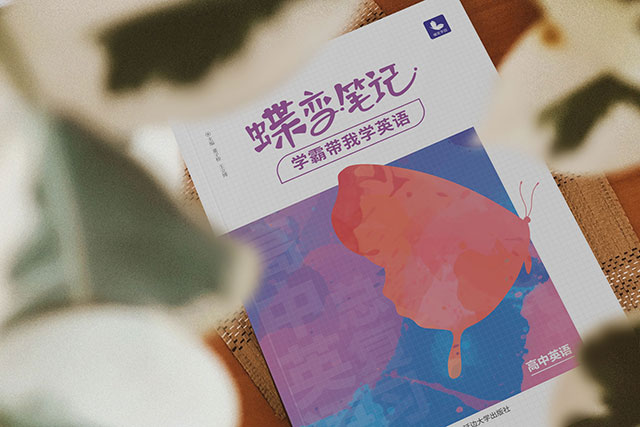 英语考试作文万能句子有哪些
英语考试作文万能句子有哪些英语作文是有拿分的诀窍的,一篇好的文章不仅要逻辑清...
2021-03-26 英语作文万能句子整理 英语常用句型有哪些
英语作文万能句子整理 英语常用句型有哪些以下内容是小编整理的英语作文万能句子和常用模板,供...
2021-03-25 2021北京十大英语四六级辅导培训机构 最新排名名单
2021北京十大英语四六级辅导培训机构 最新排名名单北京排名前十的英语四六级辅导培训机构有哪些?小编为...
2021-03-25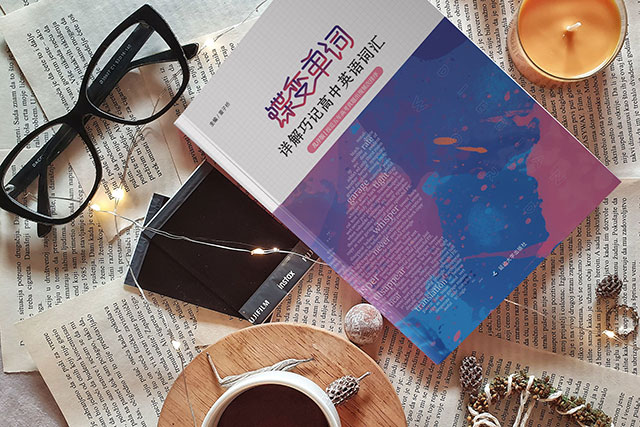 如何有效的提升英语成绩
如何有效的提升英语成绩高中英语怎么学,这是众多高三学子都比较头疼的的一个...
2021-03-24 2021年3月高考天津卷英语试卷及参考答案 都有什么题型2021-03-24
2021年3月高考天津卷英语试卷及参考答案 都有什么题型2021-03-24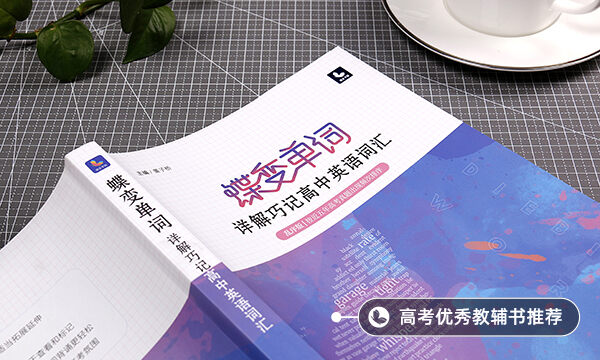 英语七选五12字口诀 七选五怎么做好
英语七选五12字口诀 七选五怎么做好七选五在英语试卷分数占比也比较高,小编整理了英语七...
2021-03-23 英语四六级辅导机构有哪些 最好的是哪个
英语四六级辅导机构有哪些 最好的是哪个英语四六级辅导机构中比较好的是EF英孚教育、新东方...
2021-03-23 2021英语完形填空顺口溜 答题技巧是什么
2021英语完形填空顺口溜 答题技巧是什么完形填空四句话口诀把握全文明主线;固定搭配记心间;...
2021-03-23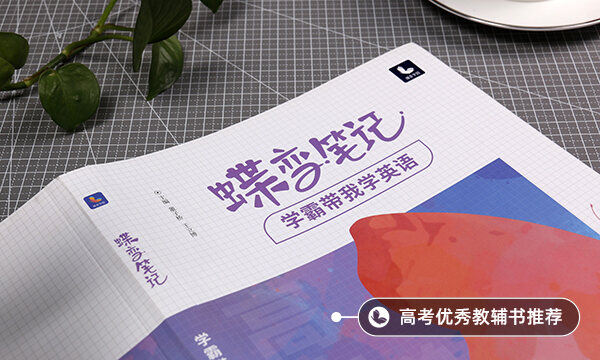 英语倒装句的类型 有什么作用
英语倒装句的类型 有什么作用为了强调、突出等词语的目的而颠倒原有语序的句式叫做...
2021-03-23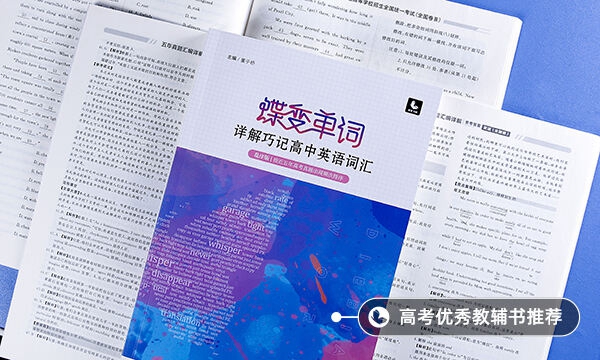 高考英语作文亮点句型 有哪些万能句子
高考英语作文亮点句型 有哪些万能句子高考英语作文是最容易得分,但也是最容易丢分的一道题...
2021-03-23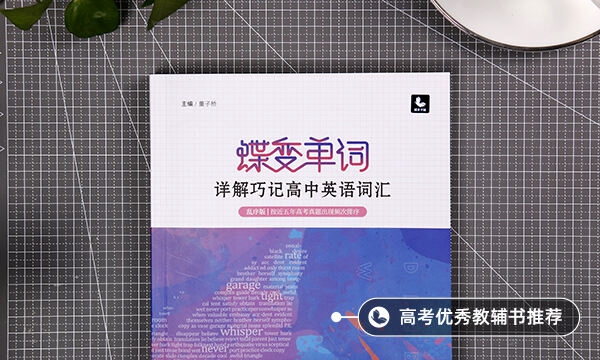 高考英语满分作文 怎么写能考高分
高考英语满分作文 怎么写能考高分为了更好的迎战高考,为大家准备了历年优秀的英语满分...
2021-03-23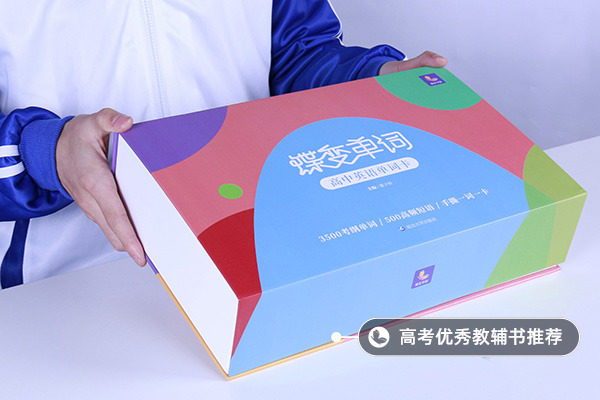 高中英语必修四单词汇总
高中英语必修四单词汇总以下内容是高中英语必修四的单词汇总,希望可以帮助各...
2021-03-23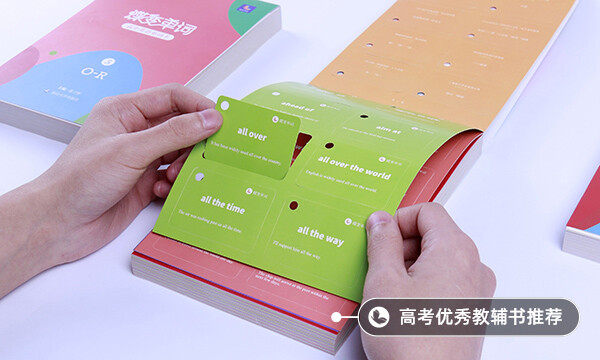 高中必修五英语单词表一览
高中必修五英语单词表一览记忆单词对于学习英语来说是很重要的,小编准备了英语...
2021-03-23
点击查看 高考英语答题技巧 更多内容

